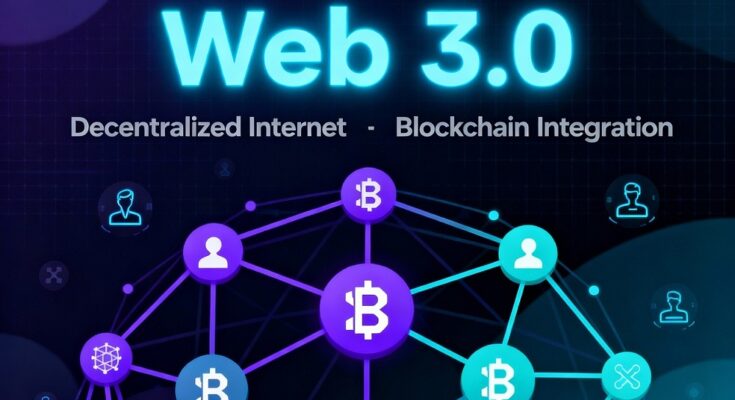The internet has gone through several transformative phases since its inception. What began as a collection of static pages in the 1990s (Web 1.0) quickly evolved into the interactive and social platforms of Web 2.0. Today, we stand at the edge of a new frontier: Web 3.0. Often described as the “next internet revolution,” Web 3.0 emphasizes decentralization, transparency, and user empowerment. Unlike the internet we know today, it promises a digital ecosystem where individuals not corporations are in control of their data, identities, and interactions.
From Centralization to Decentralization
Web 2.0 gave rise to giants like Google, Facebook, and Amazon, which transformed communication, commerce, and culture. But it also led to widespread concerns over privacy, censorship, and monopolistic control. Data became the new oil, and most of it was concentrated in the hands of a few companies.
Web 3.0 aims to shift this paradigm by leveraging blockchain technology, decentralized networks, and peer-to-peer protocols. In this model, information is stored across distributed systems, making it harder to manipulate, censor, or exploit. Instead of relying on central servers, users interact through trustless systems powered by cryptography and smart contracts.
Core Features of Web 3.0
Several key characteristics define this new era of the internet:
- Decentralization – Unlike Web 2.0 platforms, which rely on central authorities, Web 3.0 distributes data and power across a network of participants.
- Blockchain Technology – Immutable ledgers create transparent records of transactions, enabling new business models such as decentralized finance (DeFi) and non-fungible tokens (NFTs).
- Ownership and Control – Users maintain control over their digital identities and data, choosing when and how to share information.
- Interoperability – Applications in Web 3.0 are built to work seamlessly across platforms without silos.
- Artificial Intelligence and Semantic Web – Enhanced AI enables more intuitive search, personalized recommendations, and context-aware interactions.
The Rise of Decentralized Applications
Decentralized applications, or dApps, are the building blocks of Web 3.0. They operate on blockchain networks like Ethereum, Solana, and Polkadot, offering services without a central authority. From decentralized exchanges (DEXs) that allow peer-to-peer trading of cryptocurrencies to decentralized autonomous organizations (DAOs) that manage communities without hierarchical leadership, dApps represent a radical rethinking of how online services can function.
This decentralization also extends to how users interact with content and information. For instance, rather than relying on a centralized search engine, decentralized search platforms allow users to query data without intermediaries. Similarly, decentralized social networks give people greater control over their posts, audiences, and monetization.
Privacy in the Web 3.0 Era
One of the most significant drivers behind Web 3.0 is the demand for greater privacy and security. In a world where personal information is often harvested, sold, and misused, the promise of decentralized identity solutions is particularly appealing. These systems allow users to authenticate themselves without revealing unnecessary data, reducing the risk of identity theft and surveillance.
At the same time, many individuals seek tools that enhance their online anonymity while interacting with Web 3.0 platforms. For example, when participating in crypto transactions, accessing geo-restricted dApps, or securing digital communications, users may choose to buy proxy services. Proxies help mask IP addresses, ensuring both privacy and accessibility, two pillars of the decentralized web.
Challenges Ahead
Despite its promise, Web 3.0 is not without obstacles. Scalability remains a concern, as blockchain networks often struggle with high transaction fees and slow processing speeds. Usability is another challenge: while early adopters are comfortable with private keys, wallets, and smart contracts, mainstream users may find these concepts daunting.
There are also regulatory uncertainties. Governments around the world are grappling with how to approach decentralized technologies. Striking a balance between protecting consumers and fostering innovation will be a critical factor in determining the future of Web 3.0.
The Road Forward
While still in its early stages, Web 3.0 is more than a buzzword; it represents a shift in how we perceive and engage with the internet. Much like Web 2.0 transformed the way we connect, shop, and communicate, Web 3.0 has the potential to redefine the digital landscape by placing power back in the hands of users.
The revolution won’t happen overnight, but its foundation is already being laid. As blockchain networks mature, as dApps become more user-friendly, and as privacy tools like proxies gain wider adoption, Web 3.0 will continue to expand. The next internet revolution is not just about technology, it’s about trust, empowerment, and the return of control to the people.



